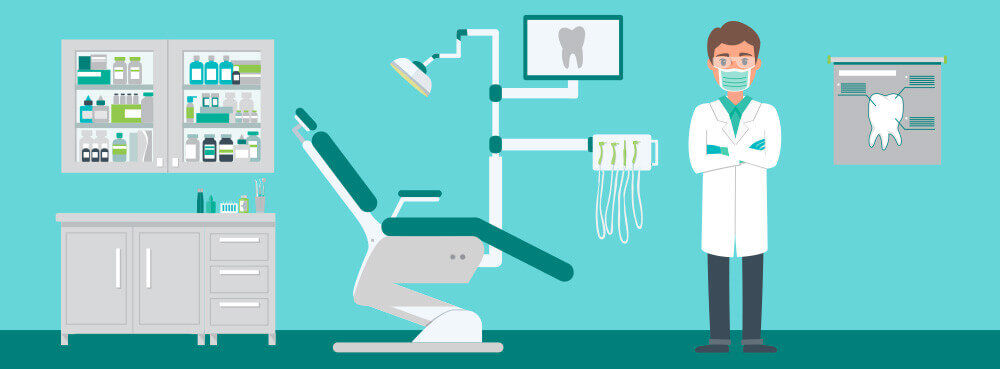Dental Amalgam Regulations

Do you work in a dental office or own a dental practice? If you do, here’s a need-to-know compliance question for you: are you aware of, and following, federal regulations regarding amalgam used for dental fillings? Do you understand how dental fillings are related to medical waste?
Amalgam doesn’t even sound like a real thing does it? But it is and it’s imperative to your clinical reputation and wallet that you understand how to safely dispose of it.
Did you know that the Environmental Protection Agency (EPA) has very, very specific regulations that pertain specifically to dental offices? This includes medical waste considerations including collection, disposal, and transportation of dental waste. Daniels Health has been an expert in healthcare waste, especially dental, for almost 30 years—we can help.
Dental effluent guidelines of the EPA
Don’t worry, I had to google “effluent” too. Essentially, the EPA has strict guidelines around liquid dental waste. Did you know that dental clinic amalgam waste is the primary source of mercury pollution in the environment? It’s not just mercury, either, but other constituents of amalgam including but not limited to silver (Ag), tin (Sn), copper (Cu), and zinc (Zn). Any of these waste materials can be found in wastewater from dental clinics.
I don’t know about you, but I don’t like any of those elements in or near my water.
The EPA has specified standards focusing on the reduction of mercury discharge from dental offices into water treatment plants. Specific code regulations are found at the federal level within 40 CFR Part 441. Numerous sections and subchapters are found in this federal code including:
- 441.10 (applicability)
- 441.20 (general definitions)
- 441.30 (pretreatment standards for existing sources – PSES)
- 441.40 (pretreatment standards for new sources – PSNS)
- 441.50 (reporting and recordkeeping requirements)
Each of these sections is very specific in scope and in addition to exclusions. For example, under section 441.10, the ruling states that paragraphs A, B, and F are applicable, while paragraphs C, D, and E are not. Take the time to read through these carefully, it can get a little tricky. Always remember you can reach out to one of our Clinical Experts at Daniels Health to help too.
Section 441.20, under general definitions, is very specific in regard to dental dischargers, dental amalgam separators, and control authorities. Do you know the difference between amalgam process wastewater (wastewater “generated and discharged by a dental discharger through the practice of dentistry that may contain dental amalgam”), and an amalgam separator (“a collection device designed to capture and remove dental amalgam from the amalgam process wastewater of a dental facility”)?
Are you starting to see why it’s so important to look at this regulations and comprehend them?
These are the types of specifics that any dental practice should be aware of, regardless of size. This also applies to veterinary offices that provide dental services to animals.
Pre-treatment standards for existing as well as pre-treatment standards for new sources are covered in depth, including guidelines aiming for a deadline date in July 2020 for pre-treatment standards applicable to existing dental practices. These standards cover the installation, operations, as well as maintenance of amalgam separators that must also meet requirements of the American National Standards Institute, the American National Standard/American Dental Association, as well as the International Organization for Standardization (ISO) under their own varying regulations.
Specificity is key when it comes to such considerations for medical waste and amalgam regulations in dental practices.
Is amalgam waste that big of a deal?
Unless you’re fond of mercury poisoning—yes.
Mercury is a neurotoxin that can accumulate in freshwater as well as shell seafood. According to the EPA, just over 100,000 dental offices in the United States alone use or remove amalgam in the country, most of which gets sent to public waste water treatment plants. Even more alarming, the EPA estimates that roughly 5 tons of mercury is discharged by dental facilities every year, much of it released into the environment.
Daniels Health is committed to not only providing safe and sustainable products and services to healthcare providers in all fields of care, but in reducing our carbon footprint, CO2 emissions reduction, and reducing the volume of medical waste that makes its way to landfills or, heaven forbid, into our water resources.
That’s why dental offices are required to maintain operational and functional amalgam separators and must maintain compliance with control authorities. Control authorities are those defined as local wastewater facilities, state environmental agencies, or regional offices of the EPA. In some states, control authorities are state authorities or agencies.
What about compliance? 
Do you know who your control authority is? Daniels Health does and we can also ensure compliance. Form 40 CFR 441.50 is a one-time compliance report for dental dischargers. It falls in the category of effluent limitations guidelines and standards for the dental office classification of federal regulations.
Did you know that the form is only to be filled out and submitted under direction of your specific control authority? If you’re not sure it’s required, contact them. If you’re still not sure, visit the EPA’s website at www.epa.gov/eg/dental-effluent-guidelines. You’ll be asked a number of questions including information about your facility, descriptions of amalgam separators (or equivalent devices), as well as to define the design, operation, and maintenance of amalgam separator or equivalent devices in your practice.
Other agencies involved in amalgam and dental waste regulations
The EPA isn’t the only government agency involved in reducing potentially biotoxic dental waste into the environment. Guidelines of the National Pollutant Discharge Elimination System is in charge of point source discharge pollutants into US waters. They focus on pre-treatment programs that ensure standards and goals of the Clean Water Act are being followed.
Waste solutions for dental practices
Daniels Health provides customized medical waste solutions applicable to dental facilities throughout the US. We focus on optimal medical waste stream management, cost efficiency, effectiveness, and containment systems. We take the guesswork out of dental waste regulations and stay on top of updates, pending changes and amendments to federal and state guidelines. Why take a chance of noncompliance and resulting penalties? Give Daniels Health a call instead.
